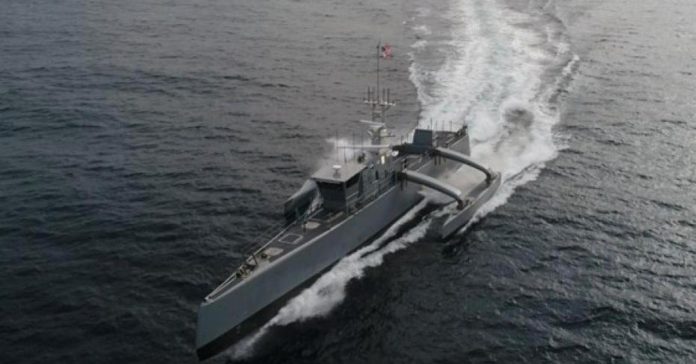The first warship to traverse open waters without a single crew member recently joined the U.S. Navy’s fleet after eight years of development and testing.
And now nearly every element of the vehicle, known as the Sea Hunter, has become classified.
“About all I can tell you is that it has transitioned from [the Defense Advanced Research Projects Agency] to the Navy, and that’s a success in the world of science and technology,” said Rear Adm. Nevin Carr. “And that’s a good thing, because that means that there’s a there there.”
Carr talked to CNBC about the vessel’s status shift during the Sea-Air-Space conference, the largest maritime expo in the United States. He is uniquely familiar with Sea Hunter since he oversaw its testing as chief of the Office of Naval Research and its current development as Leidos vice president and Navy strategic account executive.
Leidos is the sole defense contractor helping to engineer the vessel.
The concept for the unmanned vessel was born in 2010 out of the Pentagon’s so-called mad science wing, the Defense Advanced Research Projects Agency, or DARPA.
The Pentagon’s request from DARPA was colossal: Develop a drone warship capable of hunting submarines, detecting torpedoes and avoiding objects at sea while traveling at a top speed of 27 knots, or 31 mph.
Six years later, the crewless, 140-ton, 132-foot-long robotic ship, was christened as Sea Hunter on the Willamette River in Portland, Oregon.
“The project is classic DARPA, not only game-changing but paradigm-bending,” Paul Scharre writes in “Army of None: Autonomous Weapons and the Future of War.”
“Sleek and angular, it looks like something time-warped in from the future,” adds Scharre, a former…










